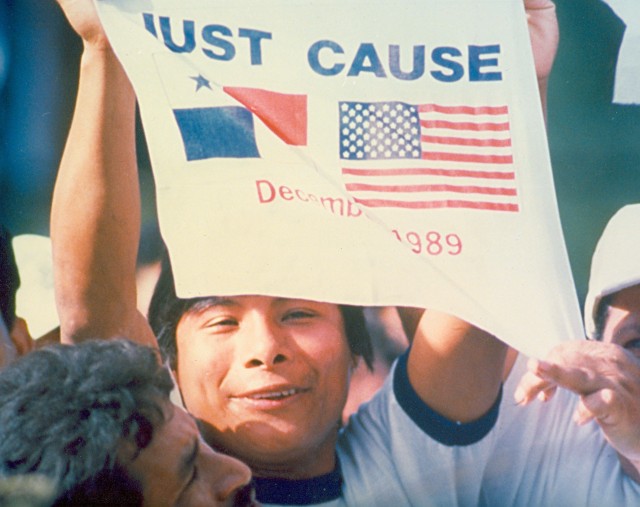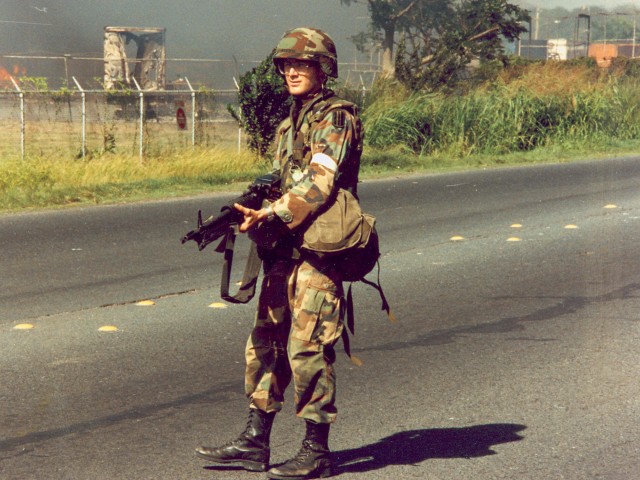In the early morning hours of December 20, 1989, the United States Army spearheaded a carefully planned and well-executed attack that overwhelmed the Panamanian Defense Forces (PDF) of dictator Manuel Noriega. The goal was to restore the democratically elected government of Guillermo Endara and arrest Noriega on drug trafficking charges. At the time, Operation Just Cause was the largest and most complex combat operation since the Vietnam War. Nearly 26,000 combat troops deployed, with just under half being from bases in the United States. Two dozen targets were attacked throughout the country, using a wide spectrum of tactical operations including Military Operations on Urbanized Terrain (MOUT), Air-Assault, Airborne, and Special Forces. Thorough planning was conducted with regard both to the operational aspects as well as to the political implications of forcibly removing Noriega from power. Through emphasis on realistic small-unit training, the U.S. Army successfully accomplished its mission; decisively neutralizing NoriegaAca,!a,,cs forces, restoring the elected democratic government, protecting American lives, and minimizing Panamanian casualties.
Operation Just Cause was initially planned as a gradual buildup of combat troops from the United States. The plan was significantly modified in early 1989 after Noriega increased attempts to intimidate American civilians and soldiers and after he orchestrated assaults against newly elected anti-Noreiga candidates. President George H.W. Bush ordered an additional 1,900 combat troops to Panama to increase security of American personnel and property, known as Operation Nimrod Dancer. He also appointed General Maxwell Thurman as the new U.S. Southern Command commander. General Thurman envisioned the operation as a rapid take-down of the Panamanian Defense Forces. He wanted to capture Noriega quickly in order to prevent dispersal of his forces into the countryAca,!a,,cs interior to form an insurgency.
Early preparation and training, beginning in May 1989, represented a key for success of Operation Just Cause. The 193rd Infantry Brigade, the primary combat unit stationed near Panama City, increased the number of live-fire exercises and MOUT training. No MOUT training site was available, so battalion commanders adapted by constructing makeshift buildings for live-fire exercises. Soldiers practiced room-clearing as well as prisoner control, using the barracks. Units of the 82nd Airborne Division and the 7th Infantry Division, soon to be sent to Panama once the operation began, also increased training. Due to the close proximity of American facilities with PDF units, operational planners and unit commanders took advantage of increased security measures. Code-named Aca,!A"Sand FleaAca,!A?, these training exercises represented deliberate demonstrations of force aimed at securing American facilities. Since many of these facilities needed to be secured or were used as staging areas for the invasion, troops were familiar with their targets. Furthermore, the exercises were run with such frequency that the enemy became desensitized to rapid movements of troops, thus helping to maintain the element of surprise crucial to success.
The careful planning and intensive training directly contributed to the successful execution of the operation. Despite its complexity, the plan represented a clear understanding of immediate military and political goals of rapidly destroying the enemyAca,!a,,cs ability to fight without needlessly endangering Panamanian lives or property. The intensive preparation and training allowed troops to quickly adapt to the unforeseen challenges of combat. Major military operations took only five days; Noriega himself surrendered on January 3; and by January 12, Operation Just Cause was over. In less than a month, the U.S. Army and other American Armed Forces had achieved complete success.
Related Links:
A Working Bibliography of MHI Sources: OPERATION JUST CAUSE








Social Sharing